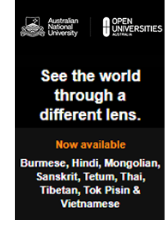With weak health systems and poor technological infrastructure, the Middle East’s most fragile states have been forced to use costly policies to fight COVID-19, with potentially devastating effect, Daniel Habib writes.
Government responses to the COVID-19 pandemic have varied from restricting the movement of citizens through curfews, lockdowns, and suspension of public transit to bolstering public health initiatives, widespread sanitation, and extensive testing and contact-tracing.
These policies are by no means mutually exclusive, and most countries have implemented a range of different measures. However, it is clear that some leaders have been inclined to favour certain strategies, and some of these reflect the political climate prior to the pandemic in their countries. This has been especially true in the Middle East.
Grappling with legitimacy and economic problems, the governments of some weak states in the region have long underinvested in public goods. As a result, restrictions on businesses, government services, mass gatherings, and movement may be implemented for disproportionately longer periods, with devastating economic effect, in the weak states of the Middle East.
This is because weaker states, due to their past aversion or inability to invest in health and technology infrastructure, often lack the robust level of resources needed to feasibly address spikes in infections if they were to lift restrictions.
In response to the pandemic, stronger states have typically aimed to find their bearings during an initial period of restrictions, which are gradually lifted once the governments are confident in their ability to accommodate future surges in cases with contact-tracing, testing, and care capacity.
However, weak states fall short in providing even basic public services, let alone the significant increases in capacity required to be prepared for localised outbreaks.
Having different priorities, fragile states are not necessarily aiming to mimic countries with better infrastructure. Hailed as implementing one of the most successful strategies, Taiwan for instance has opted for sanitation, temperature checks, and contact-tracing over strict restrictions, but weaker countries lack the capacity or initiative to take such an infrastructure-intensive approach and are opting instead for easy-to-enforce general public restrictions.
Non-pharmaceutical interventions to reduce transmission, like general lockdowns and public restrictions, have been purported to minimise economic depression. Despite not necessarily being more effective from a health perspective, and bearing this cost, weaker countries have been forced to prioritize general restrictions as they can be more convenient to initiate and enforce.
For instance, consider the fragile state of Lebanon, which rates at 85 out of a maximum 120 in the Fund For Peace’s Fragile State Index, and the stronger state of Qatar, which rates at 45 – for context, the Index rates Finland as least fragile at 14 and Somalia as most fragile at 111.
The distinction between the strength of these states is apparent in their unique responses to COVID-19. In Lebanon, the army has been mobilised in cities for years and can readily shift gears to enforcing border restrictions, lockdowns, and curfews with little additional investment, but it would take massive investment to implement community-wide testing.
On top of this, a restrictive approach seems more feasible in light of obstacles to importing and disseminating health resources, the devaluation of the Lebanese pound, an already-struggling health system, and weak state capacity to prevent arbitrary bank restrictions on international money transfers.
On the other hand, Qatar has sufficient state capacity to home-deliver medication, spearhead drive-thru testing, and has inspected 1,500 worksites during a four-phase shift to less stringent restrictions, allowing for more economic activity to take place during the pandemic. Ultimately, policies can be categorised into two groups: those which impose restrictions and those which support health monitoring, hygiene, and the provision of testing resources.
Using the Fragile States Index and CoronaNet Government Response Database, the ratio of health monitoring-oriented policies to restrictive policies in fragile Middle Eastern states, including Afghanistan, Egypt, Lebanon, and Yemen, can be compared to the ratio in relatively stronger Middle Eastern states, including Kuwait, Oman, Qatar, and the United Arab Emirates.
Additionally, the timing of the announcement and the duration of each policy can be studied to identify how long it takes each country to achieve a situation where it can ease restrictions and get economic activity flowing again.
Q atar and Lebanon are just one pair of countries to compare, but a look at the numbers shows that across the Middle East, weak states exhibit a lower ratio of monitoring-oriented policies compared to restrictive policies than stronger states, and this may seriously impact their economic recovery from the COVID-19 crisis.
atar and Lebanon are just one pair of countries to compare, but a look at the numbers shows that across the Middle East, weak states exhibit a lower ratio of monitoring-oriented policies compared to restrictive policies than stronger states, and this may seriously impact their economic recovery from the COVID-19 crisis.
Hopefully, policymakers and aid organisations can catch onto this, and it can inform international relief efforts, such as assisting these states with public health awareness campaigns or contact-tracing.
If nothing is done to help states that are too weak to have much option outside of hard lockdowns, the economic consequences could be dire, compounding suffering in a region that already seems perennially fraught with struggle.





 Pandemic insights from Bangladesh
Pandemic insights from Bangladesh
 Podcast: Pandemic policy perspectives
Podcast: Pandemic policy perspectives